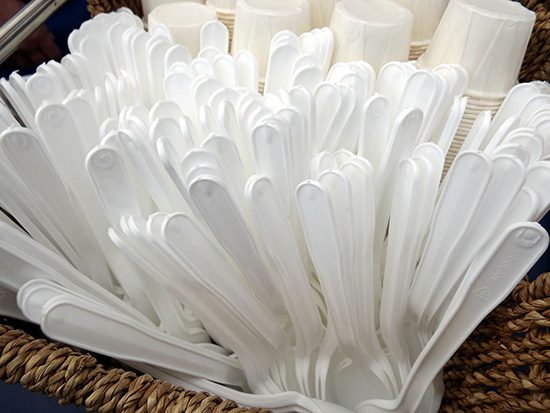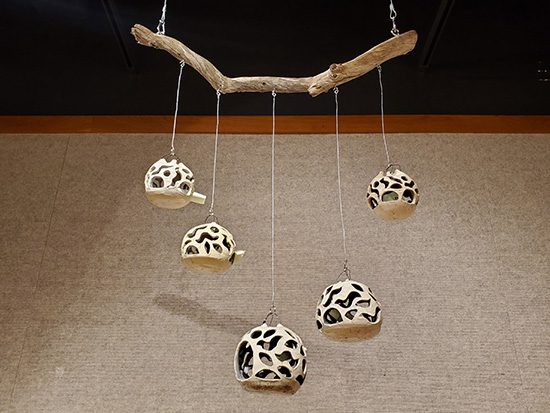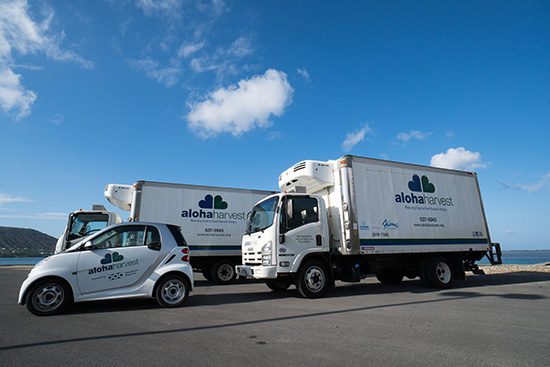
Ever get into that cash crunch when you know you’re going to have to scrape together some extra funds quickly? What do you do? You have a garage sale. You start putting stuff in the classifieds. You pick up spare work. You get creative.
Twice a year, the WCC ceramics program has a sale. One where everybody wins. The program gets crucial funds. The art collector secures that one-of-a-kind piece. And the artisan takes satisfaction having his or her work purchased by an admirer of the craft–while making some extra cash.
The next sale is Friday, May 3 from 9 a.m. to 6 p.m. and Saturday, May 4 from 9 a.m. to 3 p.m. in the Hale Pālanakila ceramics studio.
The bi-annual event has played a key role in sustaining the program these past 36 years. Started in the early 1980s, WCC ceramics found its humble beginnings nestled cozily in the far back right of campus in Hale ‘Iolani. It wasn’t until 2002 that an upgrade came in the newly minted Hale Pālanakila building, which cost an estimated $500,000 in construction. The ceramics program was reborn.
The new spot was grand and the accommodations prime. But the room was barren, devoid of the proper furnishings. There were no essential supplies, glaze ingredients or kiln-firing accessories. The throwing wheels were on their last legs. The annual $4,000 budget couldn’t fuel the program through two semesters.
“Whatever they allocated to me, I would spend in the first semester, and it would take at least $8,000 to get us through the year,” said WCC ceramics professor Paul Nash. “And the supply budget and inflation goes up every decade.”
Nash had seen successful ceramics sales at other colleges and decided to try them here.
“The long tradition of the WCC pottery sale has definitely been instrumental in our ceramics program being able to support a greater diversity of offerings, keeping the program well-stocked with incidentals to help keep student supply expenses down … “ said art instructor Bryce Myers, who was a student at WCC in the 1990s.
Participation in the sale is open to currently enrolled WCC ceramic students, though interested participants should get their names on the sales roster early. Skill level is not a criteria for eligibility. New-to-the-game amatuers and Picasso-caliber crafters are equally welcome. A few students, like myself, may initially hesitate setting foot in the seller’s arena. But once I did, I truly felt it was a fun and rewarding experience.
Sellers retain 100 percent of the profit if sales are under $100. If the seller makes more than $100, he or she retains 70 percent while the remaining 30 percent goes back into the program.
The most profitable event was a few Christmases back with sales surpassing $14,000. The spring sale usually brings in $8,000 to $10,000. These funds help maintain the kilns and keep the studio supplied, glaze buckets filled and the proverbial–and literal–fires burning.
“In a good year, the contributions from sale participants can double the budget we have to work with,” Myers said. “Those funds help with essentials like expensive unexpected repairs and long-term maintenance, but it also makes it possible to support a good ‘base camp’ for our student participants in the Raku Ho‘olaule‘a camp out in Mokulēia each September … our program and courses absolutely could not be what they are without the financial support of the twice-annual sales.”
According to Myers, the sales were also key in establishing the Hale ‘Iolani studio.
“Having the ‘Iolani studio has allowed us to expand our ceramics-based courses without impeding the popular standards of handbuilding and wheelthrowing held in our world-class Hale Pālanakila facility,” he said.
What started as a modest fundraising event now garners a following in the local community, bringing in folks from near and out-of-state. Last year’s sale saw a vacationing family from Portland stop in that ultimately purchased several hundred dollars worth of goods from the sale, one of which was crafted by this journalist himself.
Preparation for the sales commences a few weeks leading up to every May and December. There’s a buzz in the air. Excitement is high. Already preoccupied artists start getting a little more preoccupied. Murmurs of a pot sale are circulating!
“I think it’s a wonderful way for people to share art and for the community of art to thrive,” said ceramics studio regular and recent first-time seller Stephanie Shepard. “With everyone’s different creative abilities, it’s a way for new artists and old to share their work. Good for the students in a way that helps them build confidence and wonderful for the school to have an event open to the community as well as making funds for the school and students.”
“When I was first involved in the Windward CC pottery sale, working with other community potters and meeting all of the people who came to buy ceramics was a revelation,” said ceramics enthusiast and veteran seller Setsu Meyer. “It helped me to grow as an artist to see people who enjoyed the pieces that I had made and to watch them discover pieces from other community potters. I’m very happy to be a part of this.”
With a regular source of funding, WCC’s Pālanakila ceramics studio is now one of the largest community college ceramics studios in the country, according to Nash, one that he compares to Alfred University’s in Western New York, which he regards as the top ceramics institution in the country.
Being new to ceramics myself and having the opportunity to work in the Pālanakila studio is like being brought up flying first class. The service is top notch, the facilities lavish, and the menu of activities and goods first-rate.
It wasn’t until later that I realized how truly good the WCC set up is, when I saw and heard the run-downs of other college and community labs. I was taken aback. Some of these rooms had the aesthetic appeal of a cheap hotel and the spatial appeal of a shoe box.
Some ran with the barest of essentials. I saw real downgrades where the areas of kilns, glazing and firing options were concerned. I soon learned other programs didn’t get to just have their choices of wood fire, salt fire, oxidation reduction, standard cone 10 or even raku fires. They got what was available.
It was an experience that made that “jetsetter upbringing” of mine look all the more glamorous compared to the coach treatment on the dingy, crammed airbuses that were other collegiate ceramics programs.
So feel free to stop by the upcoming ceramics sale, which keeps the WCC program thriving. Get some pots for mom, a planter for yourself and a coffee mug for a good friend. There will be premium ceramics handcrafted by students and professors alike at bargain prices.
You’ll be supporting the arts, and your proceeds will go toward feeding the soul of an artist.
by Anthony Davis, Ka ‘Ohana Staff Reporter





